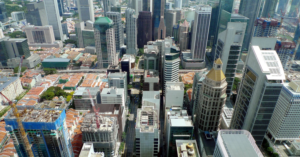
A new analysis finds that smaller capital cities will shine in 2023, providing the greatest value for property searchers, whereas regional locations were the hot destinations to purchase this year.
Canstar’s annual Rising Stars Report, which tracks the Australian real estate market and is driven by investment research company Hotspotting, has identified which areas are most likely to see property price increases in 2023.
Based on sales, price growth, vacancy rates, rental growth, infrastructure expenditure, and amenity availability, 110 property sites were selected nationwide.
After factoring in current prices, Adelaide, Brisbane, and Perth all had the highest expected gain in value, but Adelaide came out on top.
According to Hotspotting property expert and co-producer of the Rising Stars Report, Terry Ryder, “all three markets have been strongly resistant to the downturn pressures and have benefitted from the pursuit of affordability,” which is the strongest theme pervading property markets across Australia in 2022.
Although Regional Queensland’s ranking has slipped from second to fourth, the future looks bright. It continues to reap the benefits of the flight to a more modest standard of living as the main receiver of population increase from internal migration in the country.
Bundaberg South, Caloundra, Newtown, and South Toowoomba were included.
Christie’s Beach, Craigmore, Dover Gardens, Elizabeth Vale, Gilles Plains, Kurralta Park, Magill, Munno Para, Salisbury East, and Seaford Meadows were among Adelaide’s top-rated neighborhoods.
Mr. Ryder noted that Adelaide was “in the forefront of price rise countrywide over the previous two years” and that it “continues to have one of Australia’s busiest and most competitive property markets,” with properties selling swiftly at prices that are “higher than predicted.”
It is currently the most important market in Australia, having risen from ninth place in the previous year thanks to its resilience in the face of downward pricing pressures. Adelaide’s reputation as a city that could not increase its economy, population, or property values has changed drastically due to economic development.
With the presence of several domestic and foreign corporations, it has promoted itself to the position of “Australia’s high-tech innovation capital.” As the country’s undisputed leader in renewable energy, it’s also a rising powerhouse in academia and national security. Adelaide has attracted buyers because of its low prices, above-average returns, and promising future development.
Effie Zahos, the editor-at-large of Canstar, also noted that the median property price in Adelaide’s top areas is almost half of what you would spend in Sydney or Melbourne for a similarly situated home.
Apartments in Annerley, Kangaroo Point, and West Point, as well as residences in Caboolture, Dakabin, Deception Bay, Eagleby, Eastern Heights, and Redbank Plains, rounded out the top 10 fastest-growing areas of Brisbane.
Meanwhile, areas of Perth picked out for expansion included Armadale, Baldivis, Brabham, Ellenbrook, Forest field, Hocking, Joondalup, Orelia, Waikiki, and Wellard.
Sydney, New South Wales, slid from fourth to twelfth, while regional New South Wales, Australia, fell from first to seventh in the report’s ranks of the fastest-growing real estate markets.
This has happened simultaneously when the state economy has been significantly slowing down. Mr. Ryder said, “The high-end markets have decreased substantially in Sydney and several of the high-profile regional cities, which have become highly costly sites for property in the recent boom.”
Yet, he assured them that there would be expansion opportunities.
It contained “Sydney suburbs” like “Campsie,” “Fairfield,” “Georges Hall,” “Granville,” “Jamisontown,” “Liverpool,” “Lurnea,” “Marrickville,” “Rooty Hill,” and “Westmead,” as well as “regional” cities like “Armidale,” “Dubbo,” “Glen Innes,” “Goulburn,” “Muswellbrook,” and more.
Similarly, Canberra has fallen from fifth to ninth place because of its high housing costs. Some of the best neighborhoods in this area include Chisholm, Dickson, Franklin, Ngunnawal, and O’Connor.
Mr. Ryder said that the finest locations to invest in real estate are located in Caroline Springs, Epping, Forest Hill, Glen Waverley, Hoppers Crossing, Melton South, North Melbourne, Richmond, Roxburgh Park, and Sunbury, with Melbourne falling two spots to the last position since 2022.
The regional property market in Tasmania, which has been experiencing a sustained boom, has reached its pinnacle, he said, putting rural Tasmania in the last position.
Brighton, Devonport, Invermay, New Norfolk, and Youngtown are the finest examples of regional Tasmania.
She continued by saying that even while she didn’t expect Australia’s real estate market to witness the same price increases as in recent years, the location was still crucial.
“It doesn’t matter if you shop for the ideal home in the perfect neighborhood if you can’t pay the loan,” she remarked.
“Buyers should carefully consider their long-term goals and whether or not they can still afford the monthly payments. As interest rates and consumer price indexes continue to rise, they will have a chilling effect on consumers’ capacity to pay and take on debt. Because of this, more potential purchasers may be prevented from making a purchase.
“If you can tune out the chatter about whether or not home prices will collapse and instead focus on where and how much you can afford to spend, real estate is still a fantastic way to grow wealth over the long run.”








